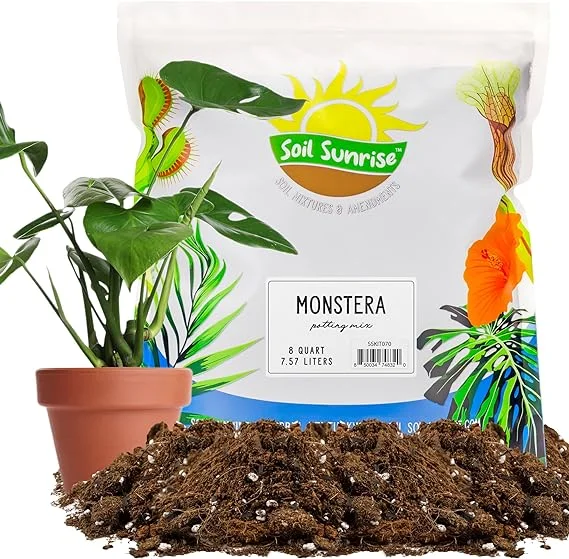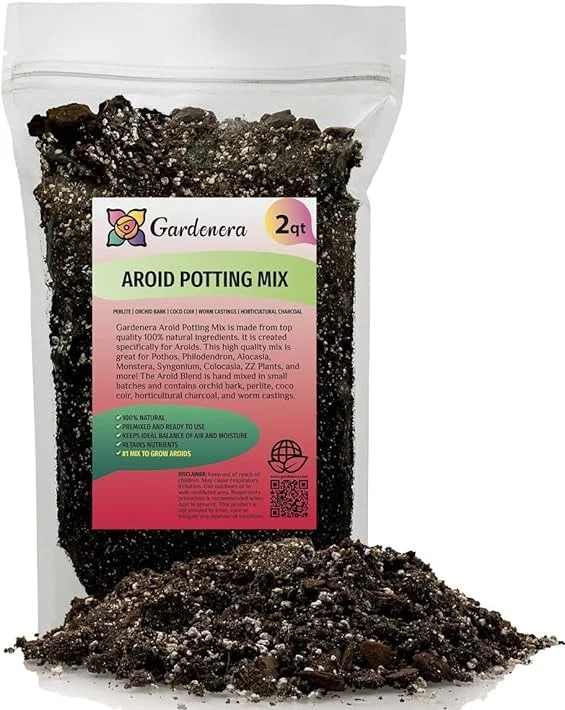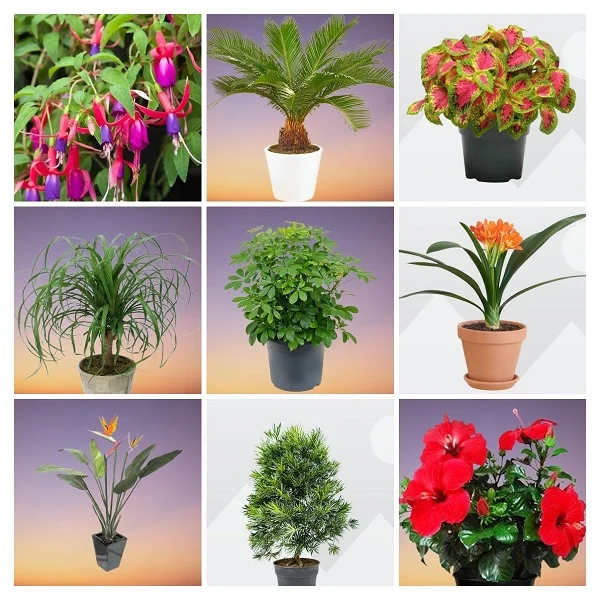Five Holes Plant (Monstera standleyana) Indoor Care, Propagation, Growing Problems
Some links in this post may be affiliate links
Five Holes Plant (Monstera standleyana) does well in bright indirect light, average warmth, moderate humidity and moderately moist, rich, well-drained soil coupled with monthly feeding in the growing period.
Monstera standleyana is one of the popular Monstera varieties with upright, oval, dark-green leaves which are striped with white and silvery speckles.
Each leaf has a unique pattern and the stems have a wide, butterfly-like shape which make the Five Holes Plant a spectacular decorative plant in any space.
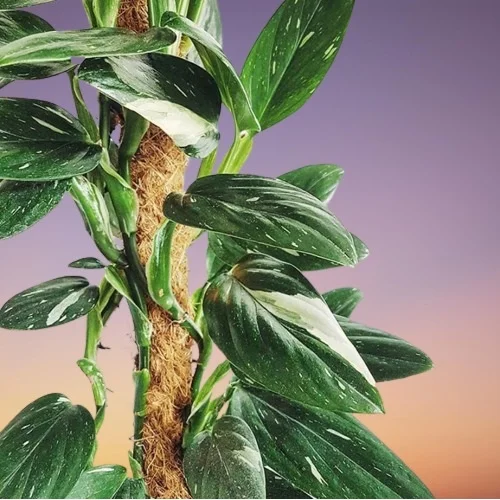
Botanical name: Monstera standleyana
Family: Araceae
Common name: Five Holes Plant
Origin
Monstera standleyana is native to the tropical rainforests of Central America in Costa Rica, Nicaragua, Honduras and Panama.
Size
Five Holes Plant can grow to a height of 12-15 feet. It can be grown as a climber on a moss pole or on a trellis which makes it one of the best plants for the office space.
Varieties
Three variants of the Monstera standleyana are available. The first one is Monstera standleyana Variegated White which has white speckles on the foliage and stem.
The second one is Monstera standleyana Albo-Variegata which has portions of the plant in white discoloration.
The third one is Monstera standleyana Variegated Yellow which has yellowish-cream portions, speckles and stripes on the leaves.
Monstera standleyana is sometimes incorrectly labelled as Philodendron standleyana or Philodendron Cobra due to its close resemblance to Philodendrons.
Toxicity
Monstera standleyana is mildly toxic to humans and toxic to pets. If ingested it can cause pain and swelling in the mouth, tongue and lips, vomiting, excessive drooling and difficulty in swallowing.
Where to Buy
Would like to add this elegant plant to your collection? You may obtain beautiful Monstera standleyana online from Etsy (Link to Etsy).
Monstera standleyana Care Indoors
Five Holes Plant (Monstera standleyana) performs best in bright indirect light (filtered light), average warmth of 18-280C, moderate humidity of 50-55% and moderately moist, rich, well-drained, Monstera potting soil coupled with monthly feeding during the growing season.
Monstera standleyana requires regular pruning to keep it neat, rejuvenate growth as well as discourage pest and disease infestation. Repotting is only needed when the plant becomes pot-bound. Keep reading for more on these growing conditions and how to achieve them.
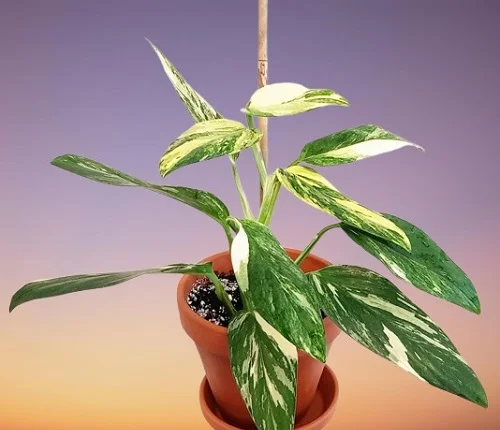
Light Requirements
Five Holes Plant grows best in bright indirect light. Keep it away from direct sunlight as it can cause sunscorch on the leaves. Position the plant next to a sunless window or near a bright window to maintain the variegation.
It can also grow under grow lights where natural lighting is insufficient. Check out these full spectrum grow lights on Amazon.
Turn the pot regularly to ensure that the plant receives light on all sides for even growth as well as prevent leggy growth.
Watering
Water Five Holes Plant liberally during the growing season and allow the top 2-3 inches of soil to dry out between waterings to keep the soil moderately moist.
Reduce watering during the cold season to keep the soil slightly moist as growth is minimal at this time but do not allow the soil to dry out completely.
Ensure the pot has a drainage hole and the soil is free-draining to prevent the soil from getting soggy as it can lead to rotting and eventual death of the plant.
Temperature and Humidity
The best temperature for Five Holes Plant is an average warmth of 18-280C. Keep it away from cold drafts as they can lead to stunted growth and leaf drop.
Moderate humidity of 50-55% is ideal for Five Holes Plant. When the air is too dry, set the pot on a wet pebble tray to increase humidity. Occasionally clean the leaves by damp-wiping with a soft cloth to get rid of dust and also discourage pest and disease infestation.
Potting Mix
Monstera standleyana soil should be rich in organic matter and well-drained to prevent it from getting soggy while providing the required nutrients. Potting mixes designed for Monsteras and those for Aroids are ideal for the plant. Make your selection from our 10 best potting soil mix for Monsteras grown indoors.
Fertilizer
Feed Five Holes Plant with a balanced, water-soluble fertilizer every 4 weeks during the growing period. Withhold feeding in the cold season as growth is minimal and feeding at this time may lead to fertilizer burn.
Repotting
Repot Five Holes Plant every 1-2 years during the growing season when it becomes pot-bound that is when the roots grow through the drainage hole. Use a pot 1 size larger than the current one. Make sure that the pot has a drainage hole to prevent the soil from becoming soggy as it can lead to root-rot. Check out these ceramic pots with saucers on Amazon.
Pruning
Pruning Five Holes Plant is easy as it involves removal of yellow and dead leaves to maintain the plant neat. When it becomes too large and unruly cutback the stems to the desired level to rejuvenate growth. The stems can be used to propagate new plants.
Propagation
Five Holes Plant (Monstera standleyana) propagation can be done at the beginning of the growing period by use of stem cuttings. The stem cuttings can be rooted in 2 ways; either in soil or in water.
How to root Five Holes Plant stem cuttings in soil
Take a stem cutting about 4-6 inches long from a healthy Five Holes Plant by cutting at a point just below an aerial root. Ensure the cutting has at least 2 nodes and some aerial roots.
Strip off the lower leaves and dip the lower cut end in a rooting hormone to hasten rooting.
Insert at least 3 inches of the cutting in moist, well-drained soil. Ensure the rooting container has proper drainage to avoid getting soggy soil.
Place the set up in a warm, well-lit place and maintain the soil moist until new growth emerges.
Allow the new Monstera standleyana to be well established before transplanting to individual pots after which you can begin routine care.
How to root Five Holes Plant stem cuttings in water
Take a stem cutting about 4-6 in. long from a healthy Five Holes Plant by cutting at a point just below an aerial root. Ensure the cutting has at least 2 nodes and some aerial roots.
Strip the lower leaves and dip the lower cut end in a rooting hormone to hasten rooting.
Place at least 3 inches of the cutting in a jar of plain water. Position the set up in a well-lit spot and change the water every 5-7 days.
Once adequate roots have developed, plant the cutting in well-drained soil.
Place the set up in a well-lit, warm place and maintain the soil moist through out.
Allow the new Monstera standleyana to be well established before transplanting to individual pots after which you can begin routine care.
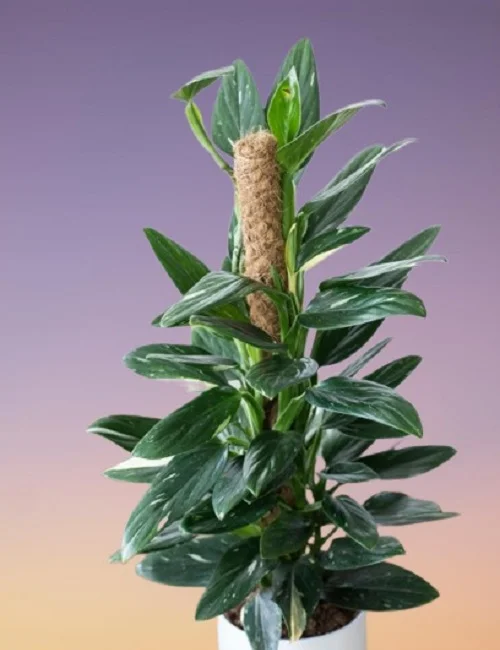
Monstera standleyana Problems
Five Holes Plant (Monstera standleyana) problems are lack of perforation, leaf drop, yellow leaves, leggy growth, brown leaf tips, rotting, pests and diseases among others. Keep reading for more on these problems, their remedies and solutions.
Diseases
Five Holes Plant is prone to leaf spot disease which is promoted by overwet conditions coupled with poor air circulation.
Isolate the affected plant to prevent spread to other plants and treat it with a fungicidal solution as per the manufacturer's directions. Ensure that there is good air circulation for the plant.
Pests
Common pests in Five Holes Plant are mealy bugs, scales, aphids, and spider mites. Isolate the affected plant to prevent spread to other plants and treat with neem oil or insecticidal soap as per the manufacturer's instructions.
Lack of perforations
The young leaves of Five Holes Plant may not be perforated but in mature leaves there are four possible causes of lack of perforation. One possible cause of lack of perforation is inadequate light. Move the plant to a brighter spot and ensure it is receiving bright indirect light or grow it under a grow light if the natural lighting is insufficient. Check out this guide on understanding light for houseplants.
The second possible cause of lack of perforation in Five Holes Plant is cold air due to cold drafts from windy doors and windows. Keep the plant away from cold drafts and ensure maintain an average warmth of 18-280C with a minimum of 150C during the cold season. Check out this guide on understanding temperature for houseplants.
The third possible cause of lack of perforation in Five Holes Plant is underwatering. Water the plant liberally during the growing season and allow the top 2-3 inches of soil to dry out between waterings to keep the soil moderately moist.
Decrease watering in the cold period and maintain the soil lisghtly moist but do not let the soil ball dry out completely. Learn more on how to water indoor plants the right way.
The fourth possible cause of lack of perforation in Five Holes Plant is underfeeding. Feed the plant with a balanced, water-soluble fertilizer every 4 weeks during the growing period. Learn how to feed houseplants.
In tall plants, the possible cause of lack of perforation is likely to be failure of water reaching the uppermost leaves. Ensure the aerial roots are pushed into the compost or allowed to grow into a moist support to supply water and nutrients to the upper leaves.
Brown papery leaf tips and edges
One possible cause of brown papery leaf tips and edges in Five Holes Plant is dry air. To elevate humidity, set the pot on a wet pebble tray or use a cool mist humidifier. Read more on how to increase humidity for indoor plants.
The second possible cause of brown papery leaf tips and edges in Five Holes Plant is that the plant may be pot-bound. Repot the plant into a pot 1 size larger and one that has a drainage hole to prevent the soil from becoming soggy as it can lead to root-rot disease.
Yellowing leaves
There are four possible causes of yellowing leaves in Five Holes Plant. One cause of yellow leaves is overwatering if many leaves are affected and there are signs of wilting and rotting. Water the plant liberally during the growing season and allow the top 2 inches of soil to dry out between waterings.
Cut down on watering in the cold season as growth is reduced at this time, therefore, the plant needs very little water. In addition, make sure that the pot has a drainage hole and that the soil is free-draining to prevent it from getting soggy.
The second cause of Monstera standleyana yellowing leaves is underfeeding if there is no wilting and rotting. Feed the plant with a balanced, water-soluble fertilizer every 4 weeks during the growing period.
The third cause of Five Holes Plant yellowing leaves is underwatering if only lower leaves are affected and have dark spots and new leaves are dark and small. Water the plant liberally during the growing season and allow the top 2 inches of soil to dry out between waterings but let the soil ball dry out completely.
The fourth cause of yellowing leaves in Monstera standleyana is exposure to direct sunlight if leaves are pale colored and have straw-colored patches the cause is too much sunlight. Shield the plant from direct sunshine.
Leaf drop
As the lower leaves of Five Holes Plant age, they fall but if there is an abnormal loss of leaves the reason is sudden change of growing conditions. Avoid sudden changes in the growing conditions for Monstera standleyana. Gradually acclimatize it to the new growing conditions before moving it to a new position.
If the Five Holes Plant leaves turn brown and dry before they fall then high temperature is the cause. Ensure to maintain an average warmth of 18-280C with a minimum of 150C.
Rotting stems
Rotting stems in Five Holes Plant is an indication of fungal stem-rot disease which is promoted by high moisture and too little warmth. You can save the plant by repotting and keeping the soil dry and warm for a period of time.
Leggy growth and small pale leaves
Too little light is the cause of leggy growth with small pale leaves in Five Holes Plant as it will not thrive in deep shade. Move the plant to a more brighter spot where it is receiving bright light away from direct sunshine or instal a grow light if natural lighting is insufficient.
Leaves weeping at the edges
If the soil is too wet, Five Holes Plant will respond with leaves weeping at the edges. Allow the top 2-3 inches of soil to dry out between waterings and reduce frequency of watering.
You liked it? Share on social media.
Related Content
Amazon Associates Disclosure
Homeplantsguide.com is a participant in the Amazon Services LLC Associates Program, an affiliate advertising program designed to provide a means for sites to earn advertising fees by advertising and linking to amazon.com.

